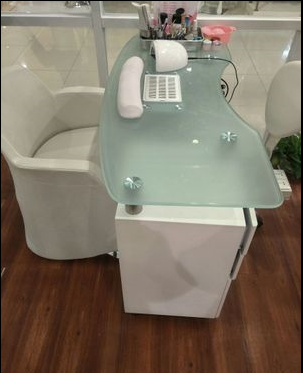1 summer Long-haired rabbits are afraid of heat due to poorly developed sweat glands and poor heat dissipation. They often suffer from reduced caloric intake and a greater threat to young rabbits and young rabbits. Therefore, the following matters should be paid attention to in the summer feeding management. 1.1 In order to prevent heatstroke, on the eve of the big day, rabbits should be cut once. 1.2 In order to block the direct sunlight into the house, causing rabbits to die of heatstroke, you can take a arbor, or plant vines shade plants like vines around the rabbit house. 1.3 When the room temperature exceeds 35°C, the rabbit house floor should be splashed with cold water, and the bricks or flat tiles that soak the well water can be placed in the cage to reduce the temperature. Conditional rabbit farms can use mechanical water to cool down the roof or use electric fans to cool down. 1.4 Breakfast should be fed early, dinner should be postponed, and Chinese food should be refined. Pay attention to feeding more green and juicy feed. Keep drinking water in the cage. Add 2% salt in drinking water at noon. 1.5 The food bowl must be cleaned daily, the cage should be cleaned, the ground must be sterilized, and the surrounding environment of the rabbit house should be well maintained to eliminate mosquitoes and flies. 2 rainy season As long-haired rabbits do not adapt to the humid environment, mortality rates are highest during the rainy season (especially for young rabbits). Every time there is rain and rain, we must do a strict disinfection work, and take measures to reduce humidity. 2.1 Mount a wet-bulb thermometer on the wall of the rabbit house, 0.3-0.7m above the ground, and observe the temperature and humidity of the rabbit house at any time. The relative humidity of the rabbit house should not exceed 50%-60%. 2.2 The indoor rabbit house requires ventilation and drying. The ground can be sprinkled with ash or lime to absorb moisture. 2.3 The rabbithouse should be kept clean and hygienically. The rabbit cage should be sprayed with 5% sura solution; the walls should be sterilized with a 20% lime milk powder brush. Rainy days can be disinfected with alcohol torches. 2.4 Focusing on the characteristics of the rainy season, put the rabbit's food off. Do not feed tidal grass, dew-grass, or feed green-blue feed with muddy water, and do not feed degraded feed. During the wet and rainy days, some dried roughage should be fed and a small amount of charcoal powder and rice husk ash should be mixed in the feed to reduce or prevent rabbit diarrhea. 2.5 In order to enhance rabbit disease resistance and prevent coccidiosis, a certain amount of bactericidal feed such as garlic, red onion, shallot, etc. should be added to feed during the rainy season and 1 month before and during the rainy season, or 0.01 %-0.02% iodine solution and 1-chlorophenyl hydrazine/only. 3 winter 3.1 rabbits should take early measures to keep warm, cold, when the temperature is below 0 °C, or snow, windy, rain, the indoor rabbithouse doors and windows to be closed, the outdoor rabbit house to hang in the caged straw warm to prevent Cold wind invasion. 3.2 During the day, the rabbit should be exposed to sunlight and more activities. The movement outside the cage should be carried out at noon with sunshine. 3.3 In severe cold weather, some hay should be placed in the rabbit cage for nighttime habitat. 3.4 There are few green and blue fodder in winter and every day should try to feed some green leaves or carrots to supplement vitamins. Regardless of big and small rabbits, the amount of rations in the diet should be increased by 1/3 over other seasons in order to withstand the heat that is lost in the cold. Frozen deteriorating feeds cannot feed rabbits. 3.5 The winter should pay attention to changes in the climate, it is not appropriate to cut the hair when the cold wave arrives.
Nail art is a kind of
work to decorate nails (toe), also known as art design. Nail is the process of
disinfecting, cleaning, nursing, maintaining, and beautifying the finger (toe)
armour according to the guests' hand shape, nail shape, skin texture, and the
color and requirements of the clothing. To complete this process, it is
necessary to rely on the nail table, Manicure Table is also divided into two
categories, one is the Wood Top Manicure Table, the other is the glass top
manicure table. It is divided into a single nail table and a double nail table.
It is divided into a table with no drawers and cabinets, can it be folded, etc.
Manicure Table Manicure Table,Melamine Manicure Table,Manicure Nail Table,Salon Manicure Table MING MEI ROYAL SPA FURNITURE , https://www.mingmeibeauty.com
The important seasonal management of the long-haired rabbit
